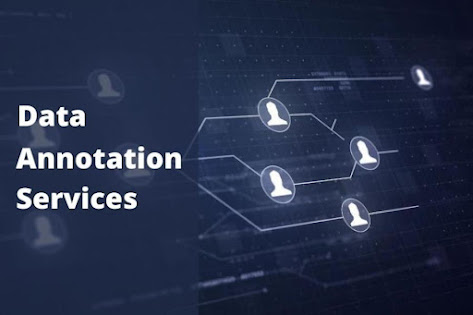The Ultimate Guide to Choosing the Right Image Annotation Services
Introduction
In the rapidly evolving landscape of artificial intelligence (AI) and machine learning (ML), image annotation is a critical step in training models to recognize and interpret visual data accurately. As the demand for AI applications continues to grow across various industries, the need for high-quality image annotation services becomes more pronounced. However, with a multitude of service providers in the market, choosing the right one can be a challenging endeavour. This comprehensive guide aims to assist you in navigating the selection process, ensuring that you partner with an image annotation service that aligns perfectly with your project's specific requirements.
1. Understand Your Annotation Needs
The first step in selecting the right image annotation service is to have a clear understanding of your project's specific needs. This involves determining the type of annotation required, such as bounding boxes for object detection, polygons for more complex shapes, keypoint annotation for pose estimation, or semantic segmentation for pixel-level classification. Additionally, assess the volume of data that needs to be annotated and the level of accuracy required. These factors will significantly influence your choice of service provider, as different companies may specialize in various types of annotations and offer varying levels of precision.
2. Evaluate the Service Provider's Expertise
When choosing an image annotation service, it's crucial to select a provider with proven expertise in the field. Look for companies that have a strong portfolio of projects similar to yours and check their client testimonials to gauge their reputation. Experience in your specific industry or use case can be a significant advantage, as it means the service provider is likely familiar with the nuances and challenges specific to your domain.
3. Assess the Quality Assurance Process
Quality assurance is a vital aspect of image annotation. Inquire about the service provider's quality control measures, including their error-checking procedures and the qualifications of their annotation team. A reliable service provider should have a robust QA process in place to ensure high accuracy levels, which is essential for the success of your AI or ML models.
4. Consider Scalability and Flexibility
Your project's needs may evolve over time, so it's important to choose a service provider that can scale up or down as required. Additionally, the provider should be flexible enough to accommodate any changes in annotation guidelines or project scope. This adaptability ensures that the service can meet your needs both now and in the future.
5. Review Data Security and Privacy Measures
Data security is paramount, especially when dealing with sensitive or proprietary images. Ensure that the service provider has stringent data protection measures in place, including secure data transfer protocols and confidentiality agreements. This will safeguard your data from unauthorised access or breaches, which is crucial for maintaining the integrity of your project.
6. Analyse Pricing Models
Pricing models can vary widely among image annotation services. Some providers may charge per image, while others may offer subscription-based or project-based pricing. Evaluate the pricing structure to ensure it aligns with your budget and project requirements. Be sure to consider the long-term costs, especially if your project is ongoing or requires a large volume of annotations.
7. Check for Technological Capabilities
The right service provider should leverage advanced tools and technologies to streamline the annotation process. This includes using machine learning algorithms to pre-annotate images, which can significantly reduce turnaround times and costs. Additionally, look for providers that offer user-friendly platforms with features such as collaborative annotation tools, project management capabilities, and integration with your existing workflows.
8. Look for Good Communication and Support
Effective communication is key to a successful partnership. Choose a service provider that is responsive and provides excellent customer support. Regular updates and open lines of communication will help ensure that your project stays on track and any issues are promptly addressed. Good communication also facilitates collaboration, allowing you to provide feedback and make adjustments as needed.
9. Consider the Turnaround Time
Depending on the urgency of your project, turnaround time can be a critical factor. Discuss your deadlines with the service provider to ensure they can deliver the annotated data within your required timeframe. A reliable provider should be able to offer a realistic estimate of the completion time and adhere to the agreed-upon schedule.
10. Request a Trial or Pilot Project
Before making a final decision, it's wise to request a trial or pilot project. This will allow you to evaluate the quality of the service provider's work and their ability to meet your specific needs. A trial project can also give you a sense of the provider's workflow and communication style, helping you determine if they are a good fit for your project.
Conclusion
Choosing the right image annotation service is a crucial step in the success of your AI or machine learning project. By carefully considering your project's requirements and evaluating potential service providers based on the factors outlined in this guide, you can ensure that you select a partner that delivers high-quality annotations, meets your budget and timeline, and contributes to the overall success of your project.
How GTS.AI Can Help Elevate Your Image Annotation Projects
At Globose Technology Solutions pvt ltd, we pride ourselves on being the premier provider of image annotation services, offering unparalleled expertise and customised solutions to meet the unique needs of our clients. Our team is skilled in a variety of annotation types, including bounding boxes, polygons, keypoint annotation, and semantic segmentation, ensuring high-quality results for any project. We utilise advanced technology, including machine learning algorithms for pre-annotation, to streamline the annotation process and reduce turnaround times and costs. Our robust quality assurance process guarantees high accuracy levels, giving our clients confidence in the reliability of our annotations.
.png)
.png)



Comments
Post a Comment